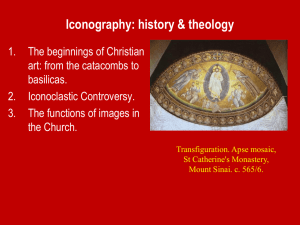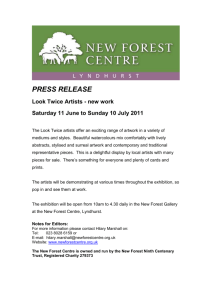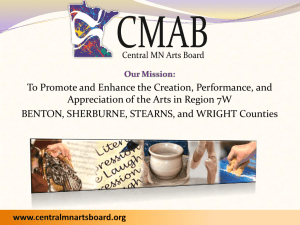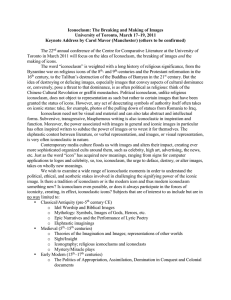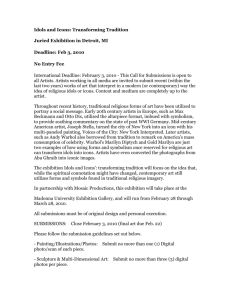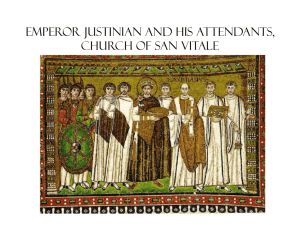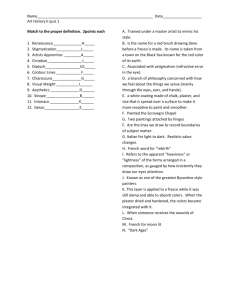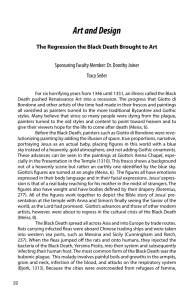Early Christian Art - Interfaith Resource Center
advertisement
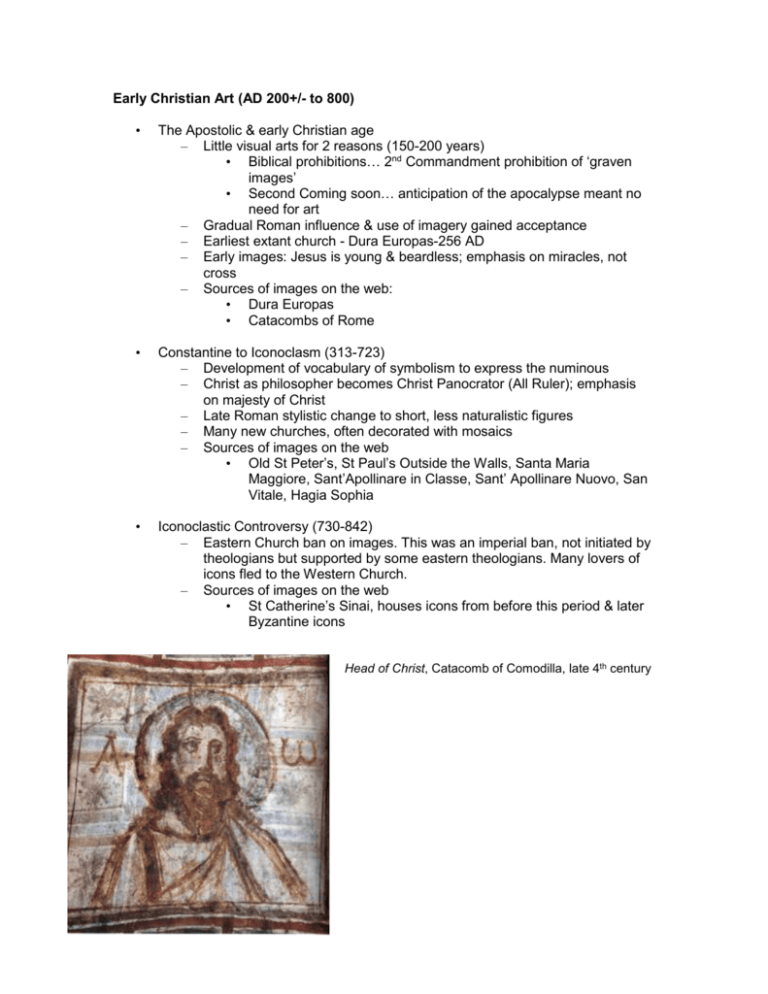
Early Christian Art (AD 200+/- to 800) • The Apostolic & early Christian age – Little visual arts for 2 reasons (150-200 years) • Biblical prohibitions… 2nd Commandment prohibition of ‘graven images’ • Second Coming soon… anticipation of the apocalypse meant no need for art – Gradual Roman influence & use of imagery gained acceptance – Earliest extant church - Dura Europas-256 AD – Early images: Jesus is young & beardless; emphasis on miracles, not cross – Sources of images on the web: • Dura Europas • Catacombs of Rome • Constantine to Iconoclasm (313-723) – Development of vocabulary of symbolism to express the numinous – Christ as philosopher becomes Christ Panocrator (All Ruler); emphasis on majesty of Christ – Late Roman stylistic change to short, less naturalistic figures – Many new churches, often decorated with mosaics – Sources of images on the web • Old St Peter’s, St Paul’s Outside the Walls, Santa Maria Maggiore, Sant’Apollinare in Classe, Sant’ Apollinare Nuovo, San Vitale, Hagia Sophia • Iconoclastic Controversy (730-842) – Eastern Church ban on images. This was an imperial ban, not initiated by theologians but supported by some eastern theologians. Many lovers of icons fled to the Western Church. – Sources of images on the web • St Catherine’s Sinai, houses icons from before this period & later Byzantine icons Head of Christ, Catacomb of Comodilla, late 4th century Medieval Period (AD 800 +/- to 1400) • Celtic, Carolingian & Ottonian periods (AD 800+1000) – Reemergence of classicism & learning fluctuated with influences of barbarian invaders – Rich tradition of illuminated manuscripts – Sources of images on the web • Book of Kells, Lindisfarne Gospel • Palace & chapel at Aachen (Aix-la-chapelle) • Manuscript illuminations • Byzantine in the East (AD 800-1450, Russia continued until 1917) – The trauma of the Iconoclastic Controversy tended to encourage conservatism in religious art – Sources of images on the web • Katholikon of Hosios Lukas, Greece • Church of the Dormition, Daphni (near Athens) • Andrei Rublev • Romanesque & Gothic in the West (AD 1000-1400) – Continued development of symbolic language with special emphasis on Mary and the saints; art is vital in teaching to the masses – Engineering advances promoted the artistic expression of church architecture, especially its emphasis on light, ‘soaring space’ & ‘reaching to Heaven’; stained glass, sculpture & frescoes used to enhance space – Late Gothic improvement in anatomy, techniques of light & shadow & finally, perspective allowed artists to create more convincing space – Sources of images on the web • Cathedrals including Chartres, Notre Dame Paris, Amiens, Santiogo de Compostela, • Nicola Pisano, Pietro Lorenzetti, Cimabue • Arena Chapel, Padua, Giotto Adoration of the Magi from the Arena Chapel by Giotto, 1305 Modern Era (1400+/- to present) • Renaissance & Baroque (AD 1400+/- to 1750) – Skills accomplished, artistic freedom begins to develop – Classical subjects more common, religious subjects still dominate – Oil painting is developed, frescoes still common, tempera painting less common – Northern Europe becomes more detail & domestic oriented; Protestant Europe went through a period of iconoclasm – Counter (or Catholic) Reformation reaffirmed Catholic tradition – Sources of images on the web • Vatican & Uffizi Galleries • Fra Angelico, Botticelli, Leonardo, Michelangelo, Raphael, Durer, Caravaggio, Bernini, Rembrandt, Rubens • Neoclassical & Romantic (AD 1750 +/- to 1850) – Secular subjects, including historical/political, overtake religious… in some cases making political martyrs into saints (Death of Marat) – Volume of religious art dwindles, especially among top artists – Sources of images on the web • William Blake • Modern (1850-present – Secular subjects dominate; faith subjects from a highly personal perspective – Some top artists hostile to faith – Other artists fill the void with a wide range of quality. – Remember: Any artist who is still alive or has not been dead 75 years or more remains under active copyright. Always give full references to artists in a classroom setting. Never reproduce for church publications or other reasons without the permission of the artist. – Sources of images on the web • Christians in the Visual Arts (association) • Michael McGrath, Robert Lentz • Georges Rouault, a few Van Gogh & Gauguin works, Maurice Denis, Henry Osawa Tanner, Salvadore Dali, Georgia O’Keefe (exposed to Catholicism in childhood, she became close to the faith before her death) God appearing to Job by William Blake, from the Book of Job, published 1826

